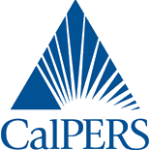This brief is about Corporate Pension Plans – Employee Retirement Security – and the role of the PBGC Guarantee Agency of the Federal Government in the protection of certain pension plans…
And what happens when corporate plans fail and PBGC steps in…
Put this in the Risk Management file.
 Almost everyone knows that bank accounts are covered by insurance – the Federal Deposit Insurance Corporation (FDIC), created in the 1930s after numerous savings and commercial banks collapsed, is the Agency that insures individual accounts to certain limits. Banks pay insurance premiums based on their deposits to cover the level of institutions’ losses.
Almost everyone knows that bank accounts are covered by insurance – the Federal Deposit Insurance Corporation (FDIC), created in the 1930s after numerous savings and commercial banks collapsed, is the Agency that insures individual accounts to certain limits. Banks pay insurance premiums based on their deposits to cover the level of institutions’ losses.
 What may not be as widely known: Congress created the Pension Benefit Guaranty Corporation (PBGC) in 1974 as part of the sweeping provisions of the Employee Retirement Income Security Act (“ERISA”). The Agency protects pension benefits in private-sector defined benefit plans. (These are designed to pay a set amount at retirement). PBGC payments do not exceed the maximum benefits that would have been paid had the plan continued under the sponsor’s management.
What may not be as widely known: Congress created the Pension Benefit Guaranty Corporation (PBGC) in 1974 as part of the sweeping provisions of the Employee Retirement Income Security Act (“ERISA”). The Agency protects pension benefits in private-sector defined benefit plans. (These are designed to pay a set amount at retirement). PBGC payments do not exceed the maximum benefits that would have been paid had the plan continued under the sponsor’s management.
This is how a corporate employer can terminate a single-employer plan:
- a “standard termination,” showing PBGC that there is money in the plan to pay all lifetime benefits owed;
- paying a lump sum to cover the beneficiary’s entire benefit (such as by buying an annuity) but they do provide a measure of retirement security for retirees – and millions more still working and counting on their pension payments.
When things go wrong: a “distress termination” results when the corporate plan does not have the money to pay all benefits owned and/or the company is in “financial distress” — such as entering bankruptcy protection. Numerous companies have done just that – and the PBGC has stepped in to protect workers and retirees.
- The PBGC has the power to step in to end a corporate employee plan if termination is needed to protect plan participants.
- Multi-employer plans are much more complex to understand; the payout varies by years of service and other factors.
This federal government agency then steps in and acts as a “trustee” to pay benefits to retirees whose employer (“plan sponsor”) has gone out of business; enters bankruptcy and gets debts “forgiven”; and simply abandons the plan. Many companies have done that as part of cost-savings as Wall Street demands more “yield” from their investments in companies.
The PBGC protects the plans of American workers in 24,000 private-sector defined benefit pension plans through two insurance programs: (1) single-employer plans, and (2) multi-employer plans (sponsored by more than one employer and maintained under collective bargaining agreements).
- In 2016, PBGC paid for monthly benefits for 840,000 retirees in 4,700 single-employer and multi-employer plans that cannot pay promised benefits.
- Right now, about 1.5 million people in “failed” plans are receiving benefits or are owed benefits. The highest paid “basic benefit” for beneficiaries is $64,000 per year/$5400 per month for a 65-year-old. Not covered: health and welfare benefits; vacation pay; severance; lump-sum death benefits.
New in 2017/2018:
Expansion of coverage to include terminated defined contribution plans; multi-employer plans; small professional service employer plans.
This is the “…new chapter in PBGC’s mission…helping to connect people in defined contribution plans with their retirement savings…”
The PBGC is expanding the “Missing Participants Program” to cover terminated 401(k) plans and other plans to connect people with their missing money (the retirement savings promised by plans). Over the years of its operations, PBGC primarily covered PBGC-insured, single-employer, defined-benefit plans.
There have been many plan failures over the years since ERISA took effect four decades ago. Airline companies entering bankruptcy and metals and tire manufacturing firms accounted for a significant portion — until recently.
- Automotive firms such as Delphi (once part of giant General Motors but spun off in the 1990s) accounted for about 70,000 workers being dumped on PBGC (with pension liabilities of $6 billion at the time in 2005).
- Kaiser Aluminum had earlier been the top failed firm (17,000 participants in 2008). More recently, United Airlines dumped 120,000-plus employees on the Agency.
After deregulation of the air transport industry, and especially after the September 11, 2001, terrorist attacks, a number of U.S. airlines went into bankruptcy; responsibility for their pension plans was assumed by PBGC.
Over the years the airlines collapsing and abandoning pension plans included: Eastern; Pan Am; Braniff International; American Airlines; Delta; Aloha; Comair; TWA; US Airways; Air Canada; Northwest – and numerous other air transport-related companies.
Metals: Other failed plans of industrial sector leaders included those of Bethlehem Steel, LTV Steel, and Weirton Steel.
Now, if a plan is terminated after December 31, 2017, PBGC under a new initiative will work with the sponsors of terminated plans to help distribute plan benefits to “missing participants”.
This will include profit-sharing, money purchase, target benefit, employee stock ownership (“ESOP”), employee stock bonus 403(b), and defined contribution plans.
- Not covered: government (public sector) plans; military service plans; church plans, and plans that cannot pay benefits to PBGC in cash.
- Being developed: a unified unclaimed pension database for “missing” participants from terminated plans.
This is supposed to help plan sponsors to “determine the appropriate sums to transfer” to the PBGC.
The Wagner Law Group with a “Law Alert” message pointed out that the issue of missing participants in terminated defined contribution plans is not necessarily new, and was addressed by the US Department of Labor in 2014 and addressed by Congress as far back as in 2006 (in the Pension Protection Act of 2006).
The PBGC board of directors are the Secretary of Labor, Secretary of Commerce, and Secretary of the Treasury. There is also a 7-member Advisory Committee.
Good News About Plan Funding
Mercer, a wholly-owned subsidiary of Marsh & McLennan Companies, tracks pension fund viability and funding. In January 2018, Mercer reported that the estimated fund level of pension plans sponsored by S&P 1500 companies as of December 31, 2017 increased 84% over the course of 2017 (compared to end of 2016 level).
Increases in equity and fixed-income helped to offset decreases in interest rates used to calculate corporate pension plans.
The downside of the “good news report” from Mercer: there is a $375 billion deficit in funded status of the employers. (The level was $408 billion a year ago; the booming stock market has helped to decrease the shortfalls.)
Mercer suggests: “2017 was marked with strong equity performance (20%-plus); however, the typical plans’ funded status increased by only 2%, given the decreasing discount rates. Looking forward to 2018, we think most plan sponsors will be taking a serious look at accelerating contributions, given the passage of tax reform.” (Scott Jarboe, Partner, Mercer Wealth.)
Mercer says contributions to employer plans serve to boost funded status, and fuel investment policy changes to “de-risk” financial and more risk transfer activities – while the market is “still vibrant” (see DJIA at record 25,000 in January 2018.)
Mercer looks at the aggregate funding status of plans sponsored by S&P 1500 companies each month as well as longer-term trends. At year-end 2017, the 1500 companies had total liabilities at $1.95 trillion; the estimated liabilities were at $2.33 trillion.
Retirement Funds in Context
The Washington Post in December 2017 reported that:
- While 60% of companies offered full-time employees a defined benefit plan, today the number is 24% of companies. (The generous defined benefit plans of yesteryear usually offered something like “55 and out,” for men and women 55 years of age with 30 years of service.)
- The average American, says the Federal Reserve consumer survey, has only about $25,000 in savings (the median) and 50% of families have no retirement funds.
The Top 10 Corporate Pension Funds in terms of “funded status: in April 2017, according to the Pensions & Investments editors, were (from #1 to #10 ranked, all at 100% funding or more):
- NextEra Energy
- BB&T
- Bank of America
- JP Morgan Chase
- BNY Mellon
- Nokia
- Duke Energy
- WestRock Co.
- PNC Financial Services
- Target
ZeroHedge’s Worst (Under-Funded) S&P 500 Plans in August 2016 were (#1 to #10):
- General Electric
- General Motors
- Boeing Company
- ExxonMobil
- AT&T Inc.
- Lockheed Martin
- Delta Air Lines
- IBM
- DuPont Company
- Ford Motor Company
The 25 plans were underfunded by a collective total of $225 billion! All of the S&P 500 underfunding came to $375 billion, according to a Citigroup report.
Implications for Companies
Having a plan dropped by a corporate sponsor can impact employee morale, and possibly impact recruiting and employee retention rates.
Some in the investment community may be cheering the closing of employee retirement and health plans (citing the cost-saving measure) — but other stakeholders may have negative views of a company that “doesn’t really care about its human resources.”
Historical Background
Yellow Flags at PBGC: Back in the 1990s, G&A Institute Chair Hank Boerner interviewed the then-leader of the PBGC, Martin Slate; he said at the time that no U.S. company really should be viewed as having a “life” of more than about 35 years.
That is, we should not expect the company of today to be around “tomorrow” as companies merge, suffer financial losses, have their business models disrupted, and face many other challenges.
We should not presume that any company will remain in its present condition as time goes by. As an example, he suggested we look at past rankings of the leading U.S. firms for guidance.
So, let’s look at the 1975 Fortune 500 list. We could say that those now in retirement were beginning their careers or moving along in the organization(s) at that time.
Among the “missing” at the-then top rankings in the roster are prominent oil & gas companies: Mobil (then independent, now part of ExxonMobil); Texaco; Gulf Oil; Amoco; Unocal; Marathon; Conoco; Getty; Atlantic Richfield; and, BP America.
Also, the bold names of the industrial giants of the day (and large employers) are missing, including ITT Industries; Union Carbide; Navistar International; RCA; Kraft; Eastman Kodak; Alcoa; American Can; Singer; Sperry; Greyhound; Champion International; and Uniroyal.
There was always some criticism of the Agency for its stringent views about underfunded plans, such as the “old” General Motors. (GM plan was underfunded at the start of the 1990s by at least $20 billion, about $33 billion in 2017 dollars.)
The Agency forced the issuance of a $19 billion bond issue. In 2004, GM had 2.5 retirees for each active worker. The average Chevrolet coming off the line had $1,900 in “legacy” retirement income added, which the U.S. auto industry leaders such as Chrysler’s Lee Iacocca claimed were harming domestic automakers. Eventually, GM would go bankrupt after the 2008 financial crisis.
When Ma Bell was broken up in 1984 by the Federal Government, the mighty Bell System became seven regional operating companies – “RBOCS” or Regional Bell Operating Companies.
The former holding company (AT&T) just about disappeared, losing three-quarters of market value. The brand later re-appeared as the name of one of the spun-off companies (Southwestern Bell).
A number of Bell System companies were stand-alone entities and some failed (Lucent is an example). Disruption and dramatic change reigns in the corporate sector!
A really thorough examination of the aftermath is here: https://en.wikipedia.org/wiki/Breakup_of_the_Bell_System
G&A Institute Perspectives
The rising cost of healthcare for employers (for active workers and a growing universe of retirees and dependents) constantly puts additional financial pressure on public companies.
Healthcare for retirees in plans insured by PBGC is an issue for many “old line” industrial companies that had large hourly workforces.
A number of the “old” industrial companies with large plans have been transformed into non-defined benefit plans.
Today’s large private sector employers are changing their business models and will not need as many workers.
- General Electric has put a number of long-time industrial businesses up for sale. IBM is no longer a prime manufacturer of computing hardware dominating the Hudson Valley of New York State with its sprawling plants; it became a service-focused business.
- Where [the old] General Motors had more than 800,000 employees at peak (1980s) the [new] GM in post-bankruptcy had around 200,000 in 2016.
- For GM, an agreement with the United Auto Workers (UAW) union shifted the long-term burden to a union-administered trust that manages retiree health care benefits. (This is the UAW Retiree Medical Benefits Trust, which is also an activist institutional investor). New GM employees begin work at much reduced hourly pay ($15 vs. $60 for some hourly workers at peak salary).
The old Chrysler corporate employees are covered by the trust as well. All told, the Trust funds retiree health care for 750,000 former hourly workers of GM, Ford Motor and Chrysler, using $60 billion in trust assets (public equity and fixed-income).
The long-term shift from large-employer, traditional defined benefit plans to setting up 401-ks, profit-sharing, cash buyouts of benefits on the closing of plans, early buyouts, consultant contracts vs. full-time employment, and other means continues.
To Keep In Mind
The “news” about under-funded plans can shake investor confidence. The Financial Times editors closely monitor corporate pension plans. One recent headline: US and Europe have world’s worst-funded corporate pension schemes; deterioration in recent years prompts new fears of retirement time bomb. (The news was about a study of 9,000 companies that revealed that American and European businesses have the largest plan underfunding when compared to revenues.)
The world’s six largest pension systems – USA, UK, Japan, Netherlands, Canada, Australia – were said by the World Economic Forum to projected to have collective shortfalls of $224 trillion by 2050.
This is putting huge pressure on companies, which are juggling demands on capital; balance sheets are glowing red with pension obligations (liabilities).
As Dow Chemical and DuPont were merging, DuPont paid almost $3 billion into the main employee pension fund (which had been held up by media as an example of serious underfunding).
MSCI has identified companies in utilities, telecom, and healthcare as having the largest underfunded benefits plan(s) compared to revenues. And, this metric is used to analyze a company’s ability to pay future contributions.
We can expect many more media examinations – and investor questions – as government agencies like PBGC, research organizations like MSCI, multilaterals (like OECD), actuarial consultants, investors and their coalitions, legislators, and others focus on the private sector retirement plans and healthcare plans.
These issues can affect a company’s reputation and market valuation if serious questions are raised. Ultimate responsibility for the condition of the pension plan is in the boardroom. OECD notes that “the role of the board is key to ensuring that a robust risk management framework is not only in place but also applied effectively.”
Put all of this information in your “risk management folder.”
For more information, contact G&A Institute Chair Hank Boerner at: hboerner@ga-institute.com
References for You
- The PBGC explanation about 2018 policy changes: https://www.pbgc.gov/news/press/releases/pr17-12
- Information about the Funded Status of Corporate Pension Funds is at: http://www.pionline.com/article/20170417/INTERACTIVE/170419916/the-funded-status-of-corporate-pension-funds
- Top 25 S&P 500 Underfunded Companies information at: http://www.zerohedge.com/news/2016-08-22/top-25-underfunded-corporate-pension-plans-are-225bn-underwater
- There’s a useful tutorial on pension plan funding at Investopedia: https://www.investopedia.com/articles/analyst/03/050803.asp
- Information from Mercer / Marsh & McLennan Companies on 2018 pension fund status is at: www.mercer.com (see News Release of January 5, 2018 for more details.)
Maybe of Interest
Hank Boerner, Chair of the G&A Institute, has long monitored PBGC and has assisted corporate clients experiencing issues with the Agency (always a corporate governance concern for a company’s investors). Here are two past but useful commentaries by Hank for your reading:
- “Stay Tuned” column in the NIRI IR Update, National Investor Relations Institute, February 2005: http://hankboerner.com/library/NIRI%20IR%20Update/2005/02.05%20NIRI%20Reprint.Corp%20Retirement%20Plans.pdf
- Corporate Governance & Accountability Update, Spring 1994: http://www.hankboerner.com/library/CorpGovUpdate/CorpGov%20Update%20Winter%201994%20Special%20Pension%20Report.pdf
View Our To The Point Update — Posted February 22, 2018:
ABOUT THOSE CORPORATE EMPLOYEE PENSION FUNDS — The Focus is Increasing on the Shortfalls …and Remedies
If you are interesting in learning more about the work of Governance & Accountability Institute and its portfolio of resources, tools and service offerings, please click here





